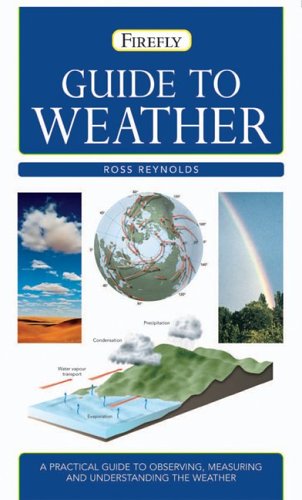
Synopsis
A practical guide to observing, measuring and understanding weather.
Meteorology is a science that gets widespread exposure on television, radio and newspapers as well as being one of the most frequent topics of conversation. Best of all, it is a science that anyone can dabble in on a daily basis.
Guide to Weather is a handy guide to the many forces of nature at work in the Earth's atmosphere.
Written for all readers, this book explains how weather phenomena actually develop and how to predict them. The book also explores the validity of weather folklore, such as red sky at night, sailor's delight; red sky in the morning, sailor take warning, and many others.
Guide to Weather covers weather topics in the following nine chapters:
- The atmosphere
- Observing the weather
- Mapping the weather
- Global weather
- Explaining the weather
- Forecasting the weather
- Hazardous weather
- Holiday weather around the world
- Environmental issues.
There is also a country-by-country climate guide -- just perfect for today's global traveler -- with concise assessments and graphs showing annual temperatures, precipitation, and sun times.
With more than 300 photographs, maps and artwork, Guide to Weather is the compact reference for travelers, meteorological hobbyists, students, farmers, and anyone who wants a better understanding of the weather.
"synopsis" may belong to another edition of this title.
About the Author
Ross Reynolds is a lecturer in meteorology at Reading University.
Reviews
There will be two distinct audiences for Reynolds' introduction to weather: the prospective meteorologist interested in how a forecast is compiled, and the reader intrigued by the dynamics of weather in general. The latter benefits from explanations--including excellent schematics--of the global components of weather, such as atmospheric and oceanic circulation, while the former learns the additional welter of factors that bear on forecasting, such as the season, latitude, topography, or humidity. An able presenter, Reynolds delivers the technical substrate necessary to a basic understanding of the earth's weather system. Gilbert Taylor
Copyright © American Library Association. All rights reserved
"About this title" may belong to another edition of this title.
Other Popular Editions of the Same Title
Search results for Guide to Weather (Firefly Pocket series)
Guide to Weather
Seller: Better World Books, Mishawaka, IN, U.S.A.
Condition: Good. 1 Edition. Former library book; may include library markings. Used book that is in clean, average condition without any missing pages. Seller Inventory # 3723645-75
Guide to Weather (Firefly Pocket series)
Seller: Bay State Book Company, North Smithfield, RI, U.S.A.
Condition: good. The book is in good condition with all pages and cover intact, including the dust jacket if originally issued. The spine may show light wear. Pages may contain some notes or highlighting, and there might be a "From the library of" label. Boxed set packaging, shrink wrap, or included media like CDs may be missing. Seller Inventory # BSM.TU70
Guide to Weather (Firefly Pocket series)
Seller: ThriftBooks-Atlanta, AUSTELL, GA, U.S.A.
Paperback. Condition: Good. No Jacket. Pages can have notes/highlighting. Spine may show signs of wear. ~ ThriftBooks: Read More, Spend Less 0.72. Seller Inventory # G1554071100I3N00
Guide to Weather (Firefly Pocket series)
Seller: GoldBooks, Denver, CO, U.S.A.
Condition: new. Seller Inventory # 35W45_86_1554071100
Guide to Weather
Seller: Book Broker, Berlin, Germany
Condition: Gut. 208 Seiten Medienartikel von Book Broker Berlin sind stets in gebrauchsfähigem ordentlichen Zustand. Dieser Artikel weist folgende Merkmale auf: Helle/saubere Seiten in fester Bindung. Leichte Gebrauchsspuren. Buchschnitt staubfleckig. Sprache: Englisch Gewicht in Gramm: 318 Taschenbuch, Größe: 12.7 x 1.3 x 19.7 cm. Seller Inventory # 660724942
Guide to Weather (Firefly Pocket series)
Seller: The Book Spot, Sioux Falls, MN, U.S.A.
Paperback. Condition: New. Seller Inventory # Abebooks408752
Guide to Weather (Firefly Pocket series)
Seller: BennettBooksLtd, San Diego, NV, U.S.A.
Paperback. Condition: New. In shrink wrap. Looks like an interesting title! Seller Inventory # Q-1554071100

